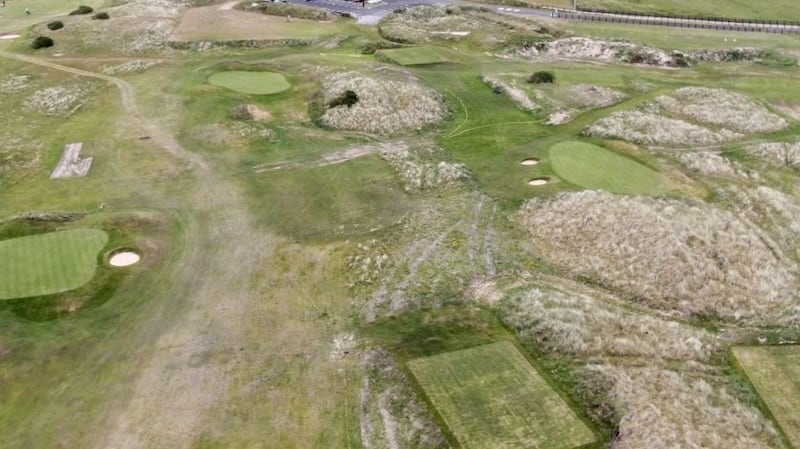For a long time golf has had an obsession with everything being bigger and better.
The Celtic Tiger era in particular saw regular members’ clubs up and down the country spend thousands building larger clubhouses, many high-end courses are pockmarked with huge mansions (which often lie empty) and the demand for bigger areas of land for longer courses with teeboxes stretching back to nearly 8,000 yards became the fashion despite the fact that, for the vast majority of people who swing a club, playing a course anywhere near 8,000 yards is a lot closer to some form of torture than enjoyment.
But now the tide may be changing. The recent release of the R&A and USGA’s Distance Insights Report has been viewed as the first real step by the game’s two main governing bodies to rein in distance and make the sport more sustainable. As we all become more aware of the environment and looking after the planet we live on, the idea of lush green golf courses taking up huge areas of land only becomes more of a stick for people to beat the sport with and drag up old, largely outdated arguments that golf is for a select few in society to enjoy behind closed gates.
There’s no doubting that golf in Ireland is accessible and far more so than in most countries around the world. However, more can always be done and with the boom golf enjoyed during the summer of 2020, now may well be the time to capitalise by opening up more avenues into the sport, particularly for children and families.
This is already something that the R&A have made moves on in the UK. Last month the governing body announced plans to build a community golf facility in Glasgow. According to the R&A the project “aims to redevelop the existing public course at Lethamhill to create a family-focused venue that provides access to a nine-hole course, Par 3 course, putting greens, short-game area, adventure golf and a 25-bay floodlit driving range for visitors to enjoy a wide range of golf activities, including shorter forms of the sport.”

R&A CEO Martin Slumbers has made it clear that facilities such as the one proposed in Glasgow are very much aimed at making golf more accessible and are an example of a governing body acting on the overused “grow the game” phrase.
In a similar vein, Ballyliffin Golf Club in Donegal recently opened the Pollan Links - a nine-hole Par 3 course designed by Pat Ruddy – which is aimed particularly at juniors and families, especially during the summer when the area is busy with tourists. Meanwhile, in January, Dún Laoghaire-Rathdown County Council announced plans to redevelop the Par 3 course in Marlay Park which had been closed in recent years after a failed attempt to install artificial putting surfaces while Douglas Golf Club in Cork as well as other clubs around the country have developed some short holes on their practice areas.
In this case, smaller really is better – the sport immediately becomes more accessible to the masses given that only a few clubs are needed to play a Par 3 course, the shorter distances allows children to be introduced to the game at a scale which suits them, the maintenance of the course is far less expensive, it takes up only a small plot of land and, for all of those who say golf now takes far too long to play, even 18 holes on a Par 3 course will only take an hour or so.
Pitch and putt courses - where holes are regulated to be no longer than 70 metres - are already dotted around the country and can offer a great gateway to golf but, as anyone who has played at a club will know, many of those involved in pitch and putt consider the game to be very much separate to golf.
The idea of a short course on the practice area of a golf club or at a community facility, such as the one proposed for Glasgow by the R&A, could create much more seamless graduation to the longer form of the sport.
Golf, like any industry, has to adapt. It doesn’t all have to be big clubhouses, tailored trousers and five- hour rounds, it can also be a small café, tracksuit bottoms and hoodies and take the same amount of time as a football match.
Both are still golf and both ends of the spectrum can co-exist. The days when bigger meant better may well be coming to an end and making the sport more accessible and more sustainable is key. Growing the game is often talked about and perhaps not acted on enough but maybe the best way to make golf bigger and better is, in fact, to make it smaller.













